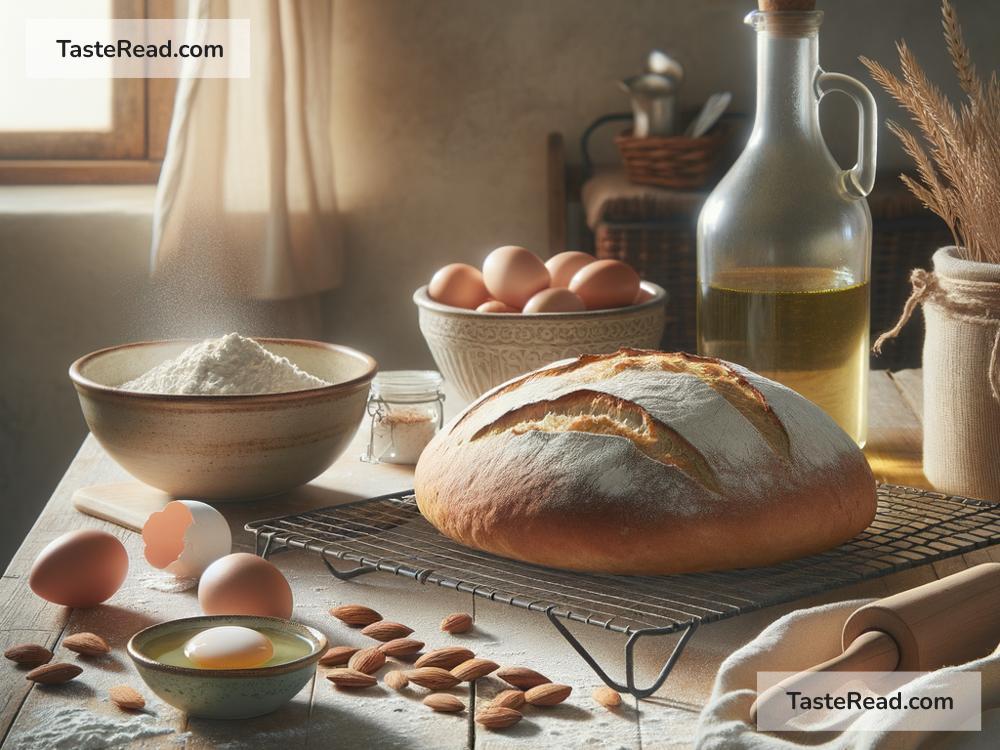How to Bake Gluten-Free Bread: A Beginner’s Guide
Bread is a staple food in many households, but for people with gluten intolerance or celiac disease, regular bread is off-limits. Luckily, you can make your own delicious and fluffy gluten-free bread at home! If you’ve never tried baking gluten-free bread before, don’t worry – we’ll walk you through the process step by step. Get ready to fill your kitchen with the warm aromas of freshly baked bread!
Why Gluten-Free Bread is Different
First, let’s talk about why gluten-free bread is different. Gluten is a protein found in wheat, rye, and barley that helps dough stick together and rise. Without gluten, bread can end up crumbly or dense. This means baking gluten-free bread requires special ingredients and techniques to get the right texture. Don’t let this intimidate you—you’ll be amazed at how good gluten-free bread can taste with just a little extra care.
What You’ll Need
Here’s a list of ingredients and tools you’ll need to whip up your gluten-free bread:
Ingredients
- Gluten-free flour: Look for a high-quality gluten-free flour blend made for baking. These blends often contain rice flour, potato starch, tapioca flour, or xanthan gum to mimic the properties of wheat flour.
- Xanthan gum (if not included in your flour blend): This is a key ingredient that helps bind your dough and gives your bread structure.
- Yeast: Active dry yeast or instant yeast will help your bread rise.
- Warm water: Yeast needs warm water to activate – not too hot, not too cold!
- Sugar: A little sugar feeds the yeast so your bread rises properly.
- Salt: For flavor.
- Oil or melted butter: Adds moisture and richness to your bread.
- Eggs (or egg substitute): Eggs help create structure and fluffiness in your bread.
Tools
- Mixing bowls
- Measuring cups and spoons
- A stand mixer or hand mixer for kneading (optional but helpful)
- A loaf pan
- Parchment paper or nonstick cooking spray
- A clean kitchen towel
Step-by-Step Instructions
Now that you have everything you need, let’s dive into the baking process.
Step 1: Prepare Your Ingredients
Gather all your ingredients and make sure your yeast isn’t expired. If your gluten-free flour blend doesn’t contain xanthan gum, measure it out separately – you’ll need about 1 teaspoon per cup of flour.
Step 2: Activate the Yeast
In a small bowl, add your warm water (about 110°F or the temperature of a warm bath) and sugar. Stir to dissolve the sugar, then sprinkle the yeast on top. Let it sit for 5–10 minutes. You’ll know it’s ready when the yeast forms a bubbly foam.
Step 3: Mix the Dry Ingredients
In a large mixing bowl, combine your gluten-free flour, xanthan gum (if needed), and salt. Stir them together so everything is evenly mixed.
Step 4: Combine Wet Ingredients
In another bowl, whisk the eggs (or egg substitute), oil, and activated yeast mixture. Pour the wet ingredients into the dry ingredients and mix well. Gluten-free bread dough will be sticky and softer than regular bread dough—it should resemble thick batter more than a traditional dough.
Step 5: Time to Knead!
If you have a stand mixer, use the paddle attachment to knead the dough for about 5 minutes. If not, you can use a hand mixer or even mix it by hand with a sturdy spoon—it’s a workout, but it gets the job done!
Step 6: Let the Dough Rise
Grease a loaf pan or line it with parchment paper. Transfer the dough to the pan, smoothing out the top with a spatula or spoon. Cover the pan with a clean kitchen towel and let the dough rise in a warm, draft-free area for around 45 minutes to an hour. It should puff up but won’t double in size like regular dough.
Step 7: Bake the Bread
Preheat your oven to 375°F (190°C). Once your dough has risen, place it in the oven and bake for 40–50 minutes. To check if it’s done, tap the top of the loaf—if it sounds hollow, it’s ready! You can also insert a food thermometer; the internal temperature should be about 200°F (93°C).
Step 8: Cool and Enjoy
Remove the bread from the oven and let it cool in the pan for 10–15 minutes. Then transfer it to a wire rack to cool completely. Gluten-free bread can be delicate when warm, so it’s best to let it cool before slicing. Once ready, cut yourself a piece and enjoy it with your favorite spread or toppings!
Tips for Success
- Experiment with flours: Gluten-free flour blends vary. If your bread doesn’t turn out as expected, try a different brand or make your own blend using recipes online.
- Keep the dough moist: Gluten-free dough is naturally wetter than regular dough. Don’t be tempted to add too much flour.
- Store properly: Gluten-free bread can dry out quickly. Wrap it tightly and store it in the fridge for up to a week, or freeze slices for longer storage.
Final Thoughts
Baking gluten-free bread at home is easier than you think! With the right ingredients and a little patience, you can create a tasty loaf that everyone in your family will love—even those who don’t avoid gluten. Once you master the basics, you can experiment with flavors by adding herbs, seeds, or even dried fruits to your dough.
Happy baking!


